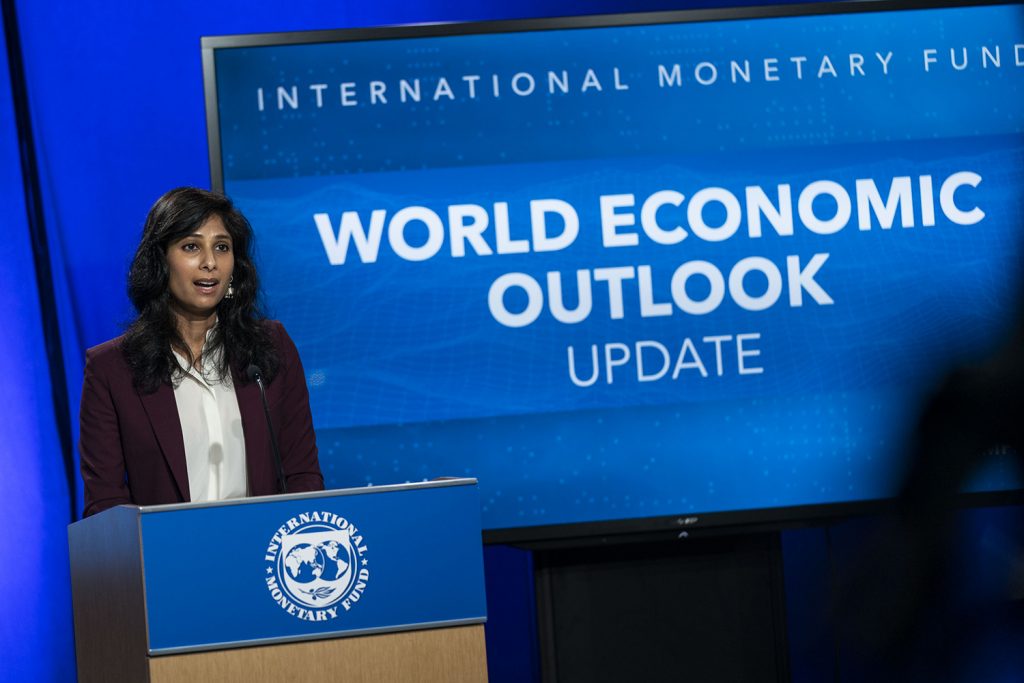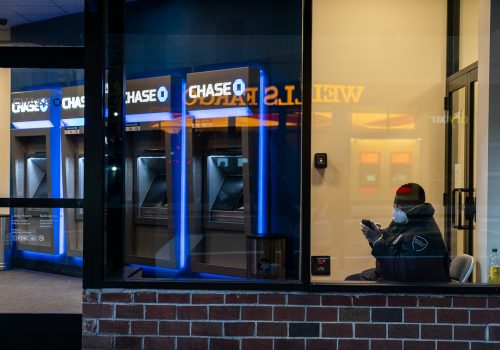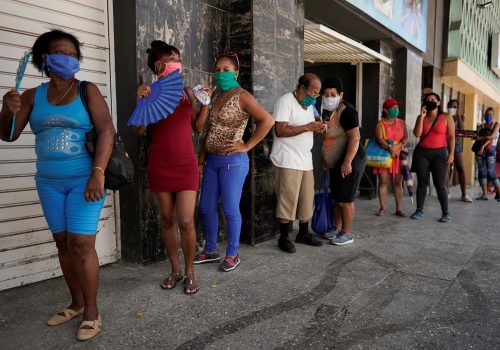While the United Nations has urged nations to “build back better” in their recoveries from the coronavirus pandemic, the way to achieve greater sustainability and inclusivity in this rebound remains unclear.
Economists are currently focused on whether recoveries will be “V shaped, L shaped, or W shaped,” based on how economic crises have looked in the past, but it is not certain how meaningful these previous experiences will be to projecting the future of this specific crisis. The COVID pandemic could bring about several dramatic changes to future economic activity, including shifts on the way people work, the use of e-commerce, and accelerated adoption of technology, alongside changes in the geopolitical landscape, and possibly other far-reaching effects on human behavior.
The data collected to both diagnose the impact of the pandemic on the economy and to inform the solutions to shape the recovery is crucial to policymakers. But right now there is a disconnect between a continued focus on traditional metrics judging economic growth on the one hand and the absence of sustainability metrics being presented to policymakers on the other that will be critical to building more resilient societies once the crisis has passed.
Providing accurate forecasts during a crisis is an extremely arduous task. The US Federal Reserve did not publish its usual economic projection materials in March this year, whereas widely publicized reports about the global economic outlook, such as the World Economic Outlook (WEO) prepared by the International Monetary Fund, or the Economic Outlook (EO) by the Organisation for Economic Cooperation and Development, presented detailed forecasts but also highlighted the multiple uncertainties about economic activity in the short to medium term. These reports contain analysis focused on traditional metrics such as output growth, the speed of recovery, trends in unemployment and productivity, financial conditions and financial market sentiment, and fiscal balances and debt-to-gross domestic product ratios, all of which face potentially large revisions as the crisis unfolds. But these reports lack the metrics to judge progress on “building back better” after the crisis, such as access to health products and services, food and water availability, the level of carbon dioxide emissions, or energy efficiency.
The data and analyses presented in the WEO and EO are vital diagnosis tools for policymakers. When world leaders meet in multilateral fora such as the Group of Twenty (G20), they kick off by discussing the underlying assumptions and economic scenarios outlined in these reports, and their reading of such metrics informs decision-making. If the metrics to measure economic activity fail to include sustainability standards, they will continue to convey an incomplete image of the future economic recovery.
These sustainability metrics are especially needed as the nature of this economic crisis could trigger a number of changes in consumption and employment patterns, and innovation and productivity growth. For example, the pandemic has highlighted the shortages in health equipment, as disruptions in the supply chains for health products and food supplies came to bare. Work habits were disrupted, notably as home-based work became a dominant feature in certain sectors of activity. The retail sector and restaurants are adapting their business models and distribution channels. Citizens, businesses, and governments are adjusting to the new circumstances. Whether these changes in behavior will last in the medium to longer term remains to be seen.
In the public at large, already intense concerns about sustainability have erupted in the past few years; the reactions to the COVID outbreak and the response by domestic and international policymakers have amplified such concerns. For example, climate change activism has mobilized large swathes of the population and came to a climax last year and in early 2020, led by Greta Thunberg. Early on the COVID outbreak highlighted risks to natural ecosystems. Many private businesses are engaging in sustainable practices in diverse sectors of the economy, ranging from diversifying supply chains and sourcing attentively to cut down on emissions, to changing labor practices on company sites. COVID is forcing some businesses to think harder about supply chains and sourcing. The financial sector is also gradually integrating sustainability into investment practices, e.g. the increased issuance of green bonds. Central banks are increasingly reviewing the assessment of risks, such that the European Central Bank has announced a strategy review aiming to include climate change as part of the risk assessment of economic and financial developments.
Beyond assessing risks, integrating long-term concerns such as climate change into public and private policies requires including sustainability metrics into decisionmakers’ toolkits. It is time to enrich the set of data, both in corporate and national accounts, allowing it to reflect the sustainability dimensions necessary to inform public and private decision-making. Information about the outlook and its sustainability need to be made available simultaneously, by fully embracing sustainability metrics alongside the traditional gauges of economic activity. Making such data available in major reporting about the global economy and presenting it to leaders during multilateral meetings, or on company dashboards, will support the analysis of economic trends and scenarios, and future policy or investment decisions, paving the way for a sustainable recovery.
Valerie Rouxel-Laxton is a nonresident senior fellow in the Atlantic Council’s Global Business and Economics Program. The views expressed here are her own.
Further reading:
Image: WASHINGTON, UNITED STATES- The Economic Counselor and Director of the Department of Studies of the International Monetary Fund Gita Gopinath, provides the update on Outlook for the world economy during the COVID-19 pandemic at the International Monetary Fund in Washington, DC, United States on June 24, 2020. (REUTERS)



